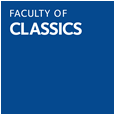This chapter offers a reformulation of the quaestio Latina for Quintus of Smyrna’s Posthomerica, centred on the contentious issue of the poem’s level of engagement with Vergil’s Aeneid. Using a re-reading of two key passages of potential Vergilian intertextuality — Calchas’ prophecy about the future glory of Rome (PH 13.333–399), and the invention of the testudo battle formation (PH 11.358–396) — I argue that Quintus’ silence with regard to the Aeneid is a sign of deliberate distancing, which sheds light on the broader cultural poetics of his work. By delicately evoking in these episodes not Vergil’s Aeneid but rather Homer’s Odyssey, Quintus, I suggest, co-opts features of Vergilian epic and reabsorbs them into a Homeric dominant model. Through this process, Greek and Roman poetics, plots, and aetiologies are combined and synchronised, in a positive statement of Quintus’ position as a Homerising poet composing under Roman rule.
empire
,Quintus/Posthomerica
,Vergil/Aeneid
,anachronism
,temporality
,intertextuality



